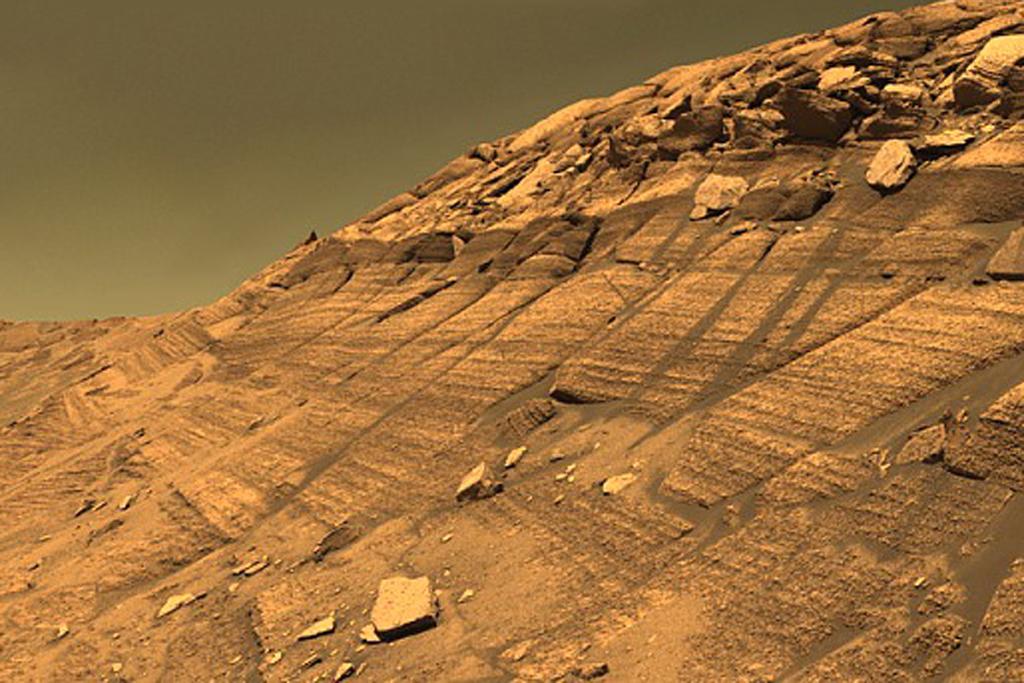Asteroid craters might hold key to life on Mars
From the inside of the crater, Endurance, on Mars.
A new study suggests that craters made by asteroid crashes might be the best place to investigate signs of life on Mars.
Scientists at the University of Edinburgh believe that fissures in the craters, which allow water to seep in, may allow for the growth of microbes that are protected from environmental factors.
“The deeply fractured areas around impact craters can provide a safe haven in which microbes can flourish for long periods of time,” said lead author Charles Cockell, professor at the University of Edinburgh’s School of Physics and Astronomy, according to Sci News.
“Our findings suggest that the subsurface of craters on Mars might be a promising place to search for evidence of life.”
Read more on Global Post: 1976 space data shows evidence of life on Mars: report
The discovery was made after researchers drilled over a mile below one of the biggest asteroid impact craters on Earth near Chesapeake Bay in Virginia, reported the Independent.
Samples collected from the crater showed signs of organisms throughout the fractures in the rock.
The study was published in the journal Astrobiology.
The story you just read is available for free because thousands of listeners and readers like you generously support our nonprofit newsroom. Every day, reporters and producers at The World are hard at work bringing you human-centered news from across the globe. But we can’t do it without you: We need your support to ensure we can continue this work for another year.
Make a gift today, and you’ll get us one step closer to our goal of raising $25,000 by June 14. We need your help now more than ever!
